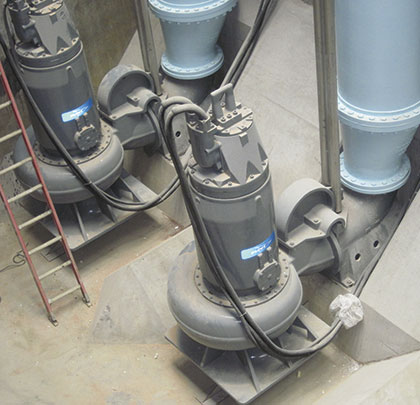Amid hullabaloo and national fanfare, the 200-acre Monmouth Park Racetrack in Oceanport, New Jersey, opened on July 30, 1870, just three miles from the seashore town of Long Branch. The thoroughbred horse track resulted from the innovative ideas of New York businessman John F. Chamberlain, New Jersey Senate President Amos Robbins, and Adams Express Company President John Hoey, to increase summer trade for once bustling seashore communities. Businessmen and hotel owners fully supported the new industry in their resort town.
The inaugural meet at the track was just five days long, with opening day carding a hurdle race and two flat races. The Continental Stakes was run in mile heats with a purse of $800, while the feature was the $1,000 Monmouth Stakes. Monmouth Park Racetrack is now home to both the United Nations Stakes and the Molly Pitcher Stakes, with purses of $500,000 and $150,000, respectively, and the Haskell Invitational with a purse of $1.75 million.
On opening day in 1870, women attendees would have been dressed in full skirts complete with bustles while men would have been sporting frock coats and top hats. If you cast your memory back, you can almost smell the hot dogs and cigar smoke emanating from the grandstand. The racetrack still carries much of that ambiance and grandeur today. What has changed since that much simpler time is the understanding of water quality implications of stormwater runoff from farms and stables where horses and livestock are plentiful. The racetrack is supported by a series of barns and other support facilities that house in excess of 500 horses during track operations. The stormwater from the barns in the racetrack backstretch area drained directly into Branchport Creek impacting the water quality of the receiving waters downstream from the race track.
In the mid-1990s, the New Jersey Sports and Exposition Authority (NJSEA), which previously owned and operated the racetrack, constructed facilities to collect horse wash water and first flush stormwater runoff for conveyance to the Two Rivers Water Reclamation Authority (TRWRA), a wastewater treatment facility located in Monmouth Beach, New Jersey. At that time, TRWRA could only accept up to 125,000 gallons per day. Runoff volumes often exceeded that amount, resulting in direct discharge to Branchport Creek.

HIGH BACTERIA RATES
As a result of the tidal characteristics of Shrewsbury River/Bay and Branchport Creek stormwater runoff from areas in the watershed were resulting in high bacteria rates following heavy rainfalls.
Through cooperative efforts between the NJSEA and the New Jersey Department of Environmental Protection (NJDEP), a comprehensive plan to achieve compliance with recently enacted New Jersey Pollutant Discharge Elimination System (NJPDES) and Concentrated Animal Feeding Operation (CAFO) regulations was proposed to improve the overall water quality of the creek and interacting waterways. These regulations required on-site handling and treatment of horse stable area stormwater runoff for up to a twenty-five-year storm, significantly reducing any potential contaminants to Branchport Creek.
In support of the plan, the Borough of Oceanport borrowed $21.5 million from the New Jersey Environmental Infrastructure Trust to fund the program. The funds were then turned over to the NJSEA, which will repay the borough. The NJSEA was responsible for hiring all contractors through a bidding and construction process that began in the spring of 2010.
Through cooperative efforts between the NJSEA and the NJDEP, a comprehensive plan to achieve compliance with CAFO regulations was proposed to improve the overall water quality of the creek and interacting waterways. The design concept was from the NJSEA and executed by consulting engineer, Paulus, Sokolowski & Sartor (PS&S).
The key elements of the plan PS&S implemented included the following:
- Construction of a new independent drainage system that collects stormwater runoff from the barn roofs. This system discharges directly to Branchport Creek, reducing the amount of stormwater that needs to be treated.
- Re-grading of the backstretch area to prevent direct discharge of surface stormwater from the barn and animal wash-down areas from entering Branchport Creek.
- Construction of a new surface stormwater collection system in the backstretch area capable of collecting the stormwater generated. The drainage system has the capacity to convey runoff from a twenty-five-year storm. Over one mile of storm sewers was installed and approximately 1,900 linear feet of 72-inch diameter interceptor sewer has been constructed to connect the surface stormwater drainage system to a new stormwater pumping station.
- Construction of a seven-million-gallon detention basin in the Elkwood section of the backstretch area. The Elkwood basin was constructed as a lined bio-filter to provide preliminary treatment of the stormwater.
- Construction of improvements to the track infield pond that include a bypass drain around the infield pond to convey stormwater to TRWRA for treatment during everyday rainfall events, increase of the depth and size of the infield pond to accommodate the storage of stormwater generated during a significant rainfall event, and the construction of an overflow structure to Branchport Creek, designed to handle storms greater than the twenty-five-year design storm.
- Construction of a new stormwater pumping station to pump 500,000 gallons of stormwater per day generated in the backstretch area, track, parking areas, and grandstand to TRWRA for treatment using two Flygt 20-horsepower NP3153 submersible pumps each rated for 1,900 gallons per minute, pump excess volume of stormwater to the Elkwood Basin using five Flygt 250-horsepower CP3501 submersible pumps each rated at 19,300 gallons per minute, and conveyance of the stored stormwater in the Elkwood Basin to TRWRA for final treatment during dry weather using two additional NP3153 pumps.
Pump manufacturer Flygt, a Xylem brand, and their distributor, Pumping Services Inc., worked closely with PS&S to design the new pump station. The chosen submersible heavy duty pumps are designed to handle unscreened wastewater and stormwater without clogging and have low overall maintenance requirements. Submersible motors are resilient by design and will continue working during the worst storm events. Flygt pumps were selected since they are known for their low life cycle cost (LCC), high energy efficiency, and unmatched reliability in handling extreme weather events.

PUMP STATION OPERATION AND CONTROLS
Flow enters the pump station via two lines. One is a 72-inch line and the other is a 15-inch line. Two inlet channels—each containing a motorized isolation gate and a mechanical coarse bar screen—split the flow, which enters the pump station through a series of gates and screens. The pump station control panel is integrated with the screen system to control the number of screens in service. Dry weather, washdown, and lower magnitude stormwater flow is be routed to the “effluent” wet well. Higher magnitude stormwater flow is being routed to the “influent” wet well for pumping to the Elkwood Basin.
The pumping system utilizes two pump groups in two separate wet wells. The smaller effluent wet well has four equally sized Flygt NP3153 pumps. The larger influent wet well has five larger equally sized and branded CP3501 pumps. A motorized gate isolates and/or directs flow to the effluent wet well, and a motorized gate isolates and directs flow to the influent wet well. All nine pumps utilize variable frequency drives to control their speed and flow.
Two of the NP3153 effluent pumps convey flow to the TRWRA; only one pump at a time is required. The other two effluent pumps move flow to the retention basin. The effluent pumps that convey flow to the TRWRA may also be utilized to pump to the retention basin, thereby providing the ability to deliver flow from the effluent wet well to the retention pond using one, two, three, or all four pumps. The five pumps in the influent (larger) wet well pump to the retention basin.
The pump control algorithm has been designed to convey as much flow as possible to the TRWRA. The TRWRA limits the instantaneous flow rate and 24-hour volume that can be conveyed. Flow to the TRWRA will be stopped if either of the TRWRA flow limits have been met; flow is then be directed to the retention pond. If the twenty-four-hour volume setpoint of 500,000 gallons per day is met, flow to the TRWRA does not resume until the beginning of the next twenty-four-hour period. A setpoint control is provided to allow the operator to select the beginning of the twenty-four-hour period, and select the setpoints for the volume and pump rate limits.
A Parshall flume flow meter measures and records the instantaneous and total flow to the TRWRA. The effluent pumps associated with the TRWRA utilize this flow meter to control both flow rate and total flow to the TRWRA.
A sump pump is located in the influent pump wet well. The sump pump is started manually by pressing a virtual pushbutton on the operator interface. The sump pump stops automatically when the stop float switch opens or when the operator presses the virtual stop button on the operator interface. Control of the sump pump is disabled when any of the influent pumps are operating.
A submersible transducer monitors the level in each wet well. Backup float switches are also provided in each wet well for high- and low-level alarms.
Pump condition and performance are monitored with a single pump memory unit, which is installed in the cable junction chamber of the pump/motor unit. The 32-kb pump monitor will store unit data plate information and listing of pump/motor unit installed sensors and statistical operational data, including number of starts, unit accumulated running time, unit service data, and histogram data of motor temperature. The condition monitoring and control of the system may be initiated from the cellular based icontrol system or locally from the PLC/HMI.
The project was completed in 2012 with no interruption to racetrack operations. Today the Monmouth Park racetrack is a center for community activities with Sunday Family Fun Day and other family programs. The racetrack continues its daily operations while addressing all environmental concerns and keeping the surrounding community safe and clean. ◆
For More Information: Xylem’s Flygt brand provides customers with a complete range of products and solutions for moving water and wastewater. We design and manufacture dry and submersible pumps and mixers, and advanced monitoring and control equipment, for use in a broad range of applications including municipal water and wastewater systems and industries such as mining, construction, aquaculture, agriculture, and many more. For more information, visit www.flygtus.com.
____________________________________________
MODERN PUMPING TODAY, November 2016
Did you enjoy this article?
Subscribe to the FREE Digital Edition of Modern Pumping Today Magazine!
![]()


